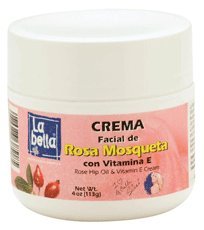 Image via WikipediaHave you seen the product commercial of century tuna in television? If so, then you known that omega-3 is mentioned in that commercial. Well, in dealing with alpha-linolenic acid, you should know that this is particularly a fatty acid and the major omega-3 fatty acid that is found in food. And the essential fatty acids are not really produced by the body and so must be included in the diet for the purpose of maintaining the health. That is basically the major function of the alpha-linolenic acid.
Image via WikipediaHave you seen the product commercial of century tuna in television? If so, then you known that omega-3 is mentioned in that commercial. Well, in dealing with alpha-linolenic acid, you should know that this is particularly a fatty acid and the major omega-3 fatty acid that is found in food. And the essential fatty acids are not really produced by the body and so must be included in the diet for the purpose of maintaining the health. That is basically the major function of the alpha-linolenic acid.
 |
La Bella Rosa Mosqueta Rose Hip Oil with Vitamin-E Cream 4 oz. Jar |
The alpha-linolenic acid, as essential fatty acid, generally plays a large role in the healing and maintaining good health. It is considered by some experts that the compounds produced from alpha-linolenic acid reduce the blood clotting and also reduce the inflammatory processes in the human body.
There are some studies made by the experts regarding the benefits of the alpha-linolenic acid which show that those who intake two servings of fish per week actually run a lower danger for heart attacks than those who eat very little amount of fish. It is then believed as such since the fish contains oils which results in a cardiovascular benefit.
Accordingly, the major signs for the alpha-linolenic deficiency are loss of motor coordination, vision impairment, tingling in the extremities, as well as some behavioral changes.
Since the introduction of the alpha-linolenic acid, numerous studies are conducted and suggest that the alpha-linolenic acid and other omega-3 fatty acids are helpful in the treatment of various conditions. Generally included in the list of the alpha-linolenic acid are the acid’s uses in heart disease, high cholesterol, high blood pressure, acne, arthritis, asthma, eating disorders, breast cancer, burns, inflammatory bowel disease, depression, menstrual pain, and others like certain infections, ulcers, migraine headaches, panic attacks, and psoriasis.
In terms of the dietary sources of the alpha-linolenic acid, it is interesting to know that sources like flaxseeds, flaxseed oil, canola oil, soybeans and soybean oil, pumpkin seeds and pumpkin seed oil, purslane, perilla seed oil, and walnuts and walnut oil contain a large amount of alpha-linolenic acid.
Today, due to its numerous uses, the alpha-linolenic acid is widely offered from health food stores. Basically, the alpha-linolenic acid comes in two major types, either in the form of cooking oils including the canola oil and soybean oil, and in the form of medicinal oils. But then some manufacturing methods applied by some manufacturing companies may alters the nutrient value of the alpha-linolenic acid products by exposing those rich alpha-linolenic products to air, heat, or light. For that, it is a usual idea for every alpha-linolenic acid to bottle it in light-resistant containers, refrigerated, and marked with expiration date.
So for those who suffer from those above mentioned problems and want to take alpha-linlonic acid products, just note that the suggested adequate intake of ALA in the diet for the pediatrics is about 1.5% ALA for infant formula, and those who are breastfed may receive sufficient amounts of ALA if the mother has an adequate intake of the supplement, and for the adults 2,200 mg per day of ALA is recommended.






























